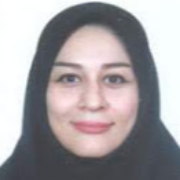Nutritional status from conception to the end of the second year of life plays a critical role in the health of the entire life (1). The importance of this golden period of 1000 days is very remarkable and it can affect the new generations’ wellbeing (2). This “window of opportunity” is more important in low and middle-income countries where not only food quantity but also its quality is not satisfactory. Simultaneously, babies in this period need macro- and micro-nutrients much more than adults do (1).
Breast milk is considered the most appropriate source of nutrition for newborns. According to the World Health Organization, exclusive breastfeeding, vaccination, and some vitamins are the only vital elements determining the newborns’ health (3). Numerous studies have proven the benefits of breastfeeding during childhood (4, 5) and adulthood (6). Moreover, lactating mothers would experience better physical and mental health (7, 8).
Surveys show that the prevalence of exclusive breastfeeding during the first six months of life varies widely among countries. For example, in the urban setting of Ethiopia, the prevalence of exclusive breastfeeding was reported as 60.9% (95% CI: 56.6% - 65.1%) (9). However, a systematic review concluded that in Middle East countries, only 20.5% (95% CI: 14.5% - 28.2%) of babies were exclusively breastfed for the first six months of life (10). On the other hand, the results of a population-based cohort study (11) on lactating mothers in Iran showed that the mean duration of exclusive breastfeeding was 4.63 ± 1.99 months (12).
Different factors can affect the practice of exclusive breastfeeding during the first six months of life. Studies have demonstrated that a supportive environment, especially the positive attitude of the partner regarding breastfeeding, would remarkably accentuate the duration of exclusive breastfeeding (13). Moreover, mothers who receive counseling regarding the benefits of exclusive breastfeeding and its techniques are more likely to maintain exclusive breastfeeding for six months (14). In addition, various maternal factors would remarkably affect the duration of exclusive breastfeeding. Of the most frequently reported factors are maternal post-partum infections, breast complications, cesarean section by maternal request, mothers’ full-time employment, birthplace (hospitals versus facility centers), maternal perception of insufficiency of breast milk, and twin pregnancies (9, 12, 14, 15). Besides, babies who are irritable and those who have less satisfactory weight gain during infancy are less benevolent from breastfeeding. On the other hand, those babies who suck pacifiers are more likely to be fed on formula (9, 10, 12-14). There are two proposed hypotheses behind this fact. The first one would be nipple confusion as the shapes of most pacifiers differ from nipple anatomy. The other reason would be the fact that by using pacifiers, babies satisfy their sucking desire, which may result in less stimulation of the nipple by the babies. Consequently, less prolactin hormone secretion from the posterior pituitary gland would lead to the inadequacy of breast milk quantity.
In conclusion, promoting exclusive breastfeeding should be considered as a multi-disciplinary program that needs the collaboration of different sectors.
Lactating mothers should be benefited from parental leave; consequently, they would devote themselves to provide a tranquilizing atmosphere for their family. For a minority of mothers with critical positions, there should be high-quality nurseries in the workplace so that mothers could feed their infants on demand. Moreover, lactating mothers should be benefitted from some incentives including free gyms and free counseling sessions.
Simultaneously, an advocating multi-dimensional program should be propagated. Fathers should be informed of their principal role in supporting their wives with a positive attitude regarding breastfeeding. Some health volunteers should be trained to support mothers with scientific and precise information regarding breastfeeding. Moreover, mothers should be informed of indicators of breast milk adequacy, as well as definite and simultaneously limited indications of starting formula. In addition, healthcare workers should be motivated to hold meetings advocating the advantages of breastfeeding for not only expecting mothers but also other audiences.
Moreover, there should be some special venues for lactating mothers in public places including the parks, the cinemas, sidewalks, and bus stations. Therefore, it would help mothers to overcome the shy feeling regarding breast feeding in public places.
Therefore, promoting breastfeeding is done by providing a motivational environment where breastfeeding is considered as dignity and value.
